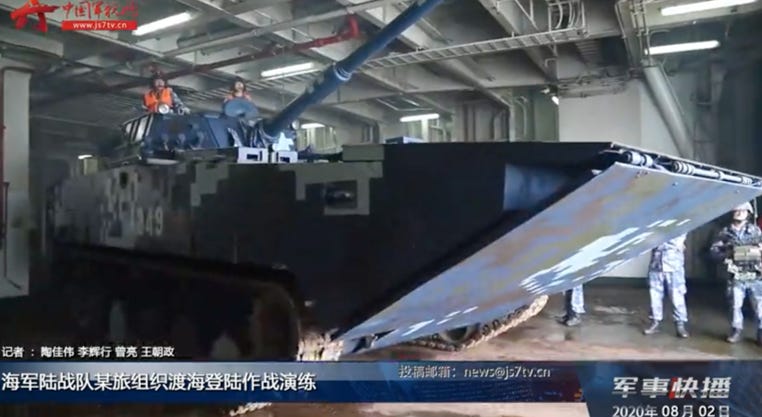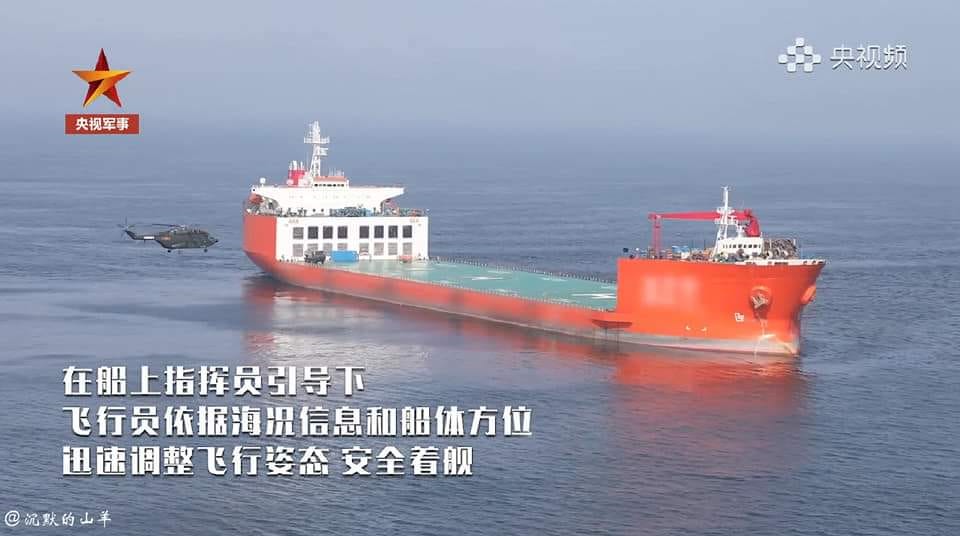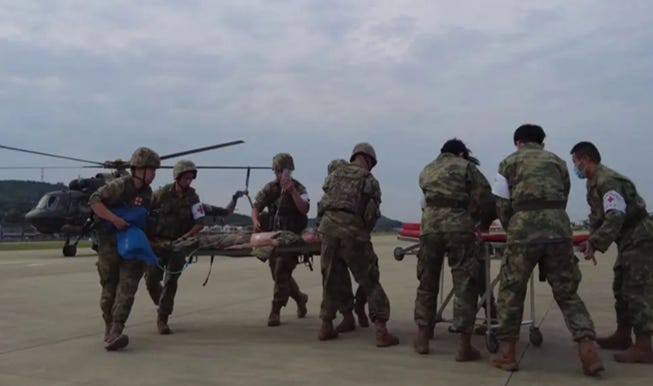Note from Lethal Minds:
This is the third of several articles feeding into our upcoming war game and crisis simulation Flashpoint Taiwan. The purpose of this simulation is to simulate a diplomatic crisis in the Taiwan Strait which triggers an invasion of Taiwan by the PLA. This simulation will feature both military practitioners and foreign affairs students and professionals.
As part of this article series, one of our writers Quantico Warfighting Society will be hosting Zoom classes to provide additional context and learning opportunities. The link to these calls will be available on our social media account.
Participants will be assigned to factions in the simulation at random, although preference to leadership positions will be given to those who interact with these articles and with the Zoom classes we will be hosting.
The next zoom class will be held at 8pm Eastern Time 12 October 2023. You can find a link to the zoom class in our bio on Instagram.
At the end of this article will be a thought exercise. We encourage you to write a brief response to that question and send it in to our email at lethalmindsjournal@gmail.com
Be informed, be prepared, be Lethal.
Dedicated to those who serve, those who have served, and those who paid the final price for their country.
The Sino Taiwanese Conflict Part Four: Logistics
The People’s Liberation Army’s (PLA) logistical capabilities are the least discussed aspects of a potential invasion of Taiwan. Furthermore, the ability for the PLA to logistically sustain such an operation will likely be key for any invasion to be successful. The reason why logistics would be a deciding factor in any Chinese invasion is because logistical support to amphibious operations is the hardest to conduct due their overall complexity. This article will touch upon the PLA’s logistical capabilities it will likely use during a cross-strait invasion, ranging from Command and Control (C2), vessels used to support beach landings to evacuation of casualties. The article will also highlight various limitations regarding the organization’s ability to conduct these logistical operations. Conversely, Taiwan’s logistical capability to sustain defensive operations against a potential invasion would also be examined.
PLA’s Logistical Command and Control Capabilities
The PLA understands the importance of the organization’s ability to provide logistical support – including transport, medical evacuation, casualty treatment, etc. – to beach landing operations. The importance is reflected in the various articles and other publications written on the subject. However, the PLA’s likely do not have the necessary capabilities – lack of dedicated amphibious vessels, specialized logistical equipment, and of wartime reserves – to provide logistical support to any invasion. This notion is reflected in various studies and articles that identified several capabilities – including the previously mentioned three – that the PLA is deficient in. The PLA’s logistical capabilities would also be strained if it needs to conduct additional logistical missions to support another front. The fronts would include the intervention of the United States and its allies to assist Taiwan, a combination of a blockade and economic sanctions, or India entering the conflict.
Regarding C2 of the logistical operations, the PLA believes that the overall command would consist of the following characteristics:
A highly centralized command with a decentralized capability to respond to rapidly changing situations at the operational and tactical levels;
Highly mobile to ensure command and coordination of mobile logistical units;
High degree of survivability against enemy strikes and cyber-attacks;
Transportation and delivery and Petroleum, Oil, and Lubricants (POL) will have separate commands from the main command.
The PLA places an emphasis on the survivability of the various command units that will be found at all levels of any beach landing operation. The PLA will likely reinforce logistical units that will make up any operation’s main effort while other units in other efforts or fronts will receive less or no additional units. The operations would any operations to break out of the beachheads and follow-on operations. The main effort’s reinforcements would consist of multiple smaller units created for redundancy and to prevent overall paralysis if one group is destroyed or rendered combat ineffective. Furthermore, the PLA places a significant amount of emphasis on establishing communications networks capable of providing stable and resilient communications even in complex electromagnetic environments.
However, the C2 structure has disadvantages related to both its structure but also communication methods it would use during various stages of the operation. One disadvantage would be the relative ease in disrupting logistical operations through targeting the C2 nodes via kinetic strikes or cyber-attacks. A strike against a C2 node or command would cause significant disruption to operations because of highly centralized natural of command found throughout the logistical support units. Another disadvantage is the logistical support unit’s vulnerability to jamming and other forms of electronic warfare when using radio and satellite communications. This disadvantage is the readily apparent during both the landing and subsequent stages.
Transportation for Logistical Operations
The PLA will use various forms of transportation – such as aircraft, trains, vehicles, and vessels – to move supplies and personnel during any invasion. The reason why is because of the massive scale any logistical operation would be to sustain the forces involved in undertaking any invasion. For example, some studies conducted by the PLA give extreme requirements ranging upwards of 3,000 military trains, one million vehicles, 2,100 aircraft, and approximately 8,000 vessels. However, other sources state the operation would need between 550-700 landing ships, various logistical ships, and transport aircraft to transport supplies to logistical sites in Taiwan. The PLA would likely have difficulty in gathering the required number of transportation assets, even if it leverages a large percentage of civilian assets. The various civilian transportation assets – ranging from vehicles, aircraft, and vessels – do not meet military requirements, even after the implementation of the National Defense Mobilization Law and National Defense Transportation Law. However, even if the PLA were to gather the necessary amount of transportation assets needed, the traffic volume in southeast China – especially near the embarkation areas – would be at an unprecedented scale. The traffic volume would also extend to the various logistical vessels either carrying supplies to or casualties from Taiwan.
The PLA would mainly utilize the rail and road networks to transport supplies and personnel to the embarkation areas located along the southeastern coast to include riverways. They would also utilize aircraft and rivercraft whenever possible to increase their ability to move material and personnel to the coast. However, the massive traffic volume would have to use the limited roadways and rail networks that exists in the region due to the mountainous terrain. The limited roadways and rail networks and the restricting terrain mean they will be heavily congested during all stages of the logistical operation. The terrain would also create potential bottlenecks at bridges and tunnels due to weight and size limitations forcing the PLA to limit the amount of traffic using them. The Taiwanese military and its allies could conduct strikes at these sites to disrupt the movement of supplies and personnel to the embarkation sites. The strikes could also extend to the embarkation sites, ports, and airports used during the campaign, causing significantly worse disruptions at the sites. The reason why is because the PLA would then rely on alternative sites that would be farther from Taiwan and from the region’s roadways and rail network.
Equipment for Logistical Operations
The PLA also requires specialized equipment to conduct missions during various phases of the logistical operation. The equipment ranges from logistical and amphibious vessels that would be pressed into service to artificial wharves and other platforms. One issue that the PLA will run into when planning and conducting any invasion would be the lack of dedicated naval amphibious ships. One solution the PLA implemented in the past decade was to use civilian logistical vessels – such as Roll-On Roll-Off (RO-RO) vessels – to fill any logistical gaps. The RO-RO vessels would be used to embark troops and associated equipment that would be used during all phases of an invasion including any landing operations. However, the vessels would either need to be modified or built to carry and offload amphibious armored vehicles. The modifications would be to installing permanent or temporary reinforced stern ramp systems on the vessels to safely launch armored vehicles. The modifications would be completed by the state-owned companies that own the ships or the PLA– either the PLAN or the Joint Logistics Support Force. The companies would design or modify any vessels the PLA identified as important for any operations as required by the 2016 National Defense Transportation Law.
However, the PLA would also use other logistical vessels in addition to the RO-RO vessels to fill other gaps such as moving cargo or launching helicopters. The best example is the 2020 exercises the People’s Liberation Army Army’s (PLAA) 71st General Aviation Brigade conducted using a civilian semi-submersible vessel, the ZHEN HUA 28. The exercise involved various helicopters – such as Z-19 light reconnaissance and attack and Z-8 medium-lift helicopters – landing and launching from the vessel. The use of semi-submersible vessels indicates the PLA will use similar vessels offering helicopter landing/launching capability; specifically attack helicopters such the Z-19 and air assault troops carried by Z-8 helicopters. However, the semisubmersible ships such as the ZHEN HUA could carry and offload Landing Craft Air Cushioned (LCACs) vessels such as the Type 726 Yuyi or the Type 728. There are limitations in using civilian vessels to embark troops with the most important limitation is the lack of any training program for civilian crews. The lack of training program means the crews would be ill prepared to conduct logistical missions during all phases of an invasion, especially the landing phase. Another limiting factor is the potential for some of the logistical vessels not to meet the standards as defined in the National Defense Transportation Law.
Another type of logistical equipment the PLA would likely need are artificial wharves and other platforms to unload supplies. The PLA conducted research into the type of equipment needed – including the possibility of using artificial wharves and temporary platforms – to offload supplies onto beaches. However, the organization conducted few exercises regarding building and offloading supplies and troops from such platforms. The last reported exercise occurred in 2014 when the PLA built and used an artificial pier to offload one armored regiment and one artillery regiment in tide period. While is it not known why the PLA conducted few exercises involving artificial wharves, it is likely due to the disadvantages outweighing the advantages. The most significant disadvantage is the various weather factors – wind, waves, tides, coastal topography, etc. – the PLAN would account for when determining where to place the wharves. Another disadvantage would be the lack of overall training in building and using the wharves to offload supplies, including training under real world conditions.
Evacuation of Casualties and Medical Care
Casualty evacuation and medical care would be important to any invasion the PLA conducts because logistical support units at all levels would play various roles. The roles would include evacuating casualties to various medical institutions during all phases of an invasion, delivering medical equipment and supplies to transporting medical support units to the island. The reason why is due to the PLA viewing the rescue, treatment, and evacuation of casualties as extremely to maintaining soldiers’ morale. However, the any invasion attempts by the PLA would likely lead to significant casualties, especially during the landing and breakout operations. For example, the 2017 volume of Operational Logistics Support estimates the PLA would sustain approximately 120,000 casualties., Another estimate that wounded personnel would account for at least 70 to 80 percent of all casualties during any invasion of Taiwan.
Regarding the amount of time the PLA must treat and evacuate casualties, they judge that casualty care at the battalion and company level needs to be started within ten minutes of injury. The organization also believes that emergency treatment of casualties at the brigade level within three hours. The casualties would then receive preliminary treatment for combat injuries at brigade level aid stations and field hospitals by at least six hours. The PLA also judges that its medical capabilities at the joint level can create 46 field hospitals and 43 brigade level aid stations with the capacity to handle upwards to 36,000 injured personnel daily. PLA hospitals and other medical centers will also have the capacity to care for at least 70,000 individuals after their expansion in preparation for the invasion. However, casualties will also be sent to civilian medical facilities in southeast China and possibly to other facilities throughout the country. Internal PLA estimates that its wartime medical reserves can support upwards of 500,000 injured personnel for approximately 30 days.
The PLA has significant limitations regarding its ability to evacuate and provide medical care for casualties. One of the most significant limitations is that its combat medical forces are inefficient at all levels to provide the necessary medical support to the operation. While the PLA also judges its joint logistics medical capabilities to treatment casualties to as strong, it judges its combat medical units at all levels as inefficient. This would include units responsible for tactical casualty care and triage at both the battalion and company as well as brigade levels. Another limiting factor would be the weather and hydrological conditions the units would face when treating and evacuating wounded personnel. The potential for the unit to come under fire from either the Taiwanese or allied militaries would also limit the units’ ability to provide adequate care and timely evacuation of injured soldiers.
Taiwan’s Logistical Capabilities
Regarding Taiwan’s logistical capabilities, it primarily aimed to resist an invasion by China to give the United States and allies time to mobilize forces to assist the island. Taiwan does this by creating and maintaining stockpiles of POL, food, and other supplies that would enable the island to sustain its population and economy during any attack. For example, the island maintains stockpiles of various supplies – ranging from critical manufacturing materials to food – that the government checks each month. These checks are done to determine if the supplies are reaching their expiration date, or if the stockpiles need to be increased. While the Taiwanese government did not say where the stockpiles are, it is likely most are located on the island’s Central Mountain Range or eastern coast. The island also maintains a POL supply of approximately 90 days to sustain both its military and its infrastructure. The supply is divided between Taiwan’s oil refineries and importers and the government due to various laws, including the Petroleum Administration Act. Specifically, the oil refining and import industry holds at least 60 days with the government holding the remaining 30 days.
Taiwan also maintains a small but growing stockpile consisting of both U.S. and ingeniously produced munitions of various types. These munitions range from 30mm, 155mm shells, to the AGM-84 Harpoon Anti-Ship Cruise Missile (ASCMs) and MIM-104 Patriot-3 interceptors. However, Taiwan also expanded its production of various missile and loitering munition systems in early 2023, with the estimates the government will receive 1,000 missiles in 2024. These systems include the Chien Hsiang anti-radiation loitering munition and the Wan Chien Air to Ground Missiles to all variants of the Hsiung Feng missile family. However, Taiwan will also increase the speed it produces its Hsiung Feng II and III ASCMs beginning in 2025. The reason why Taiwan specifically chose to increase production of both variants of the Hsiung Feng ASCMs is to counter the threat posed by the PLAN. The island also began talks with the United States to establish a munitions stockpile in Taiwan as a contingency plan for the Indo-Pacific region. The United States would allow Taiwan to use munitions and other equipment from the stockpile if a conflict between it and China occurs. Both options would allow Taiwan to supply its forces with munitions to prevent China from creating a beachhead where it could conduct follow-on operations deeper inland.
Conclusion
The logistical capabilities that the PLA has would be insufficient to conduct a successful invasion of Taiwan. The reason why is due to the PLAN lacking enough amphibious vessels to embark all its troops it would use in the initial landings. This notion is true even if the PLA were to press civilian RO-RO and other logistical vessels into service because of the lack of trained civilian crews and most of the vessels would require some kind of modifications to become suitable for use. Its medical evacuation and casualty care would also be insufficient and likely overwhelmed due to not having enough personnel trained in tactical combat casualty care. Specifically, the medical units at the battalion and company levels would be overwhelmed since they would have to provide care while under enemy fire. However, Taiwan’s logistical capabilities while small in some respects, is growing to have enough fuel and munitions to resist a Chinese invasion.
Below are more articles regarding the PLA’s logistical capabilities:
Chinese Ferry Tales: The PLales: The PLA's Use of Civilian Shipping in Support of Over-the-Shore Logistics
https://digital-commons.usnwc.edu/cgi/viewcontent.cgi?article=1015&context=cmsi-maritime-reports
More Chinese Ferry Tales: China's Use of Civilian Shipping in Military Activities, 2021-2022
https://digital-commons.usnwc.edu/cgi/viewcontent.cgi?article=1024&context=cmsi-maritime-reports
Civilian Shipping and Maritime Militia: The Logistics Backbone of a Taiwan Invasion
https://digital-commons.usnwc.edu/cgi/viewcontent.cgi?article=1020&context=cmsi-maritime-reports
Chinese Military Experiments with Using Commercial Vessels as Helicopter Bases
Logistics Support for a Cross-Strait Invasion: The View from Beijing
https://digital-commons.usnwc.edu/cgi/viewcontent.cgi?article=1021&context=cmsi-maritime-reports
The Cross-Strait Conundrum: Assessing the Viability of a Chinese Invasion of Taiwan
The PLA Army's New Helicopters: An "Easy Button" for Crossing the Taiwan Strait?
https://digital-commons.usnwc.edu/cgi/viewcontent.cgi?article=1016&context=cmsi-maritime-reports
Can Taiwan Resist a Large-Scale Military Attack by China?
https://www.rand.org/pubs/research_reports/RRA1658-1.html
TDG:
Considering the PLA’s limitations in its logistical capabilities, how would you plan to disrupt its logistical operations if you were viewing it from the Taiwanese or U.S. military perspective? Alternatively, what aspects (i.e., the weak links) of the operations would be considered a priority for strikes?










